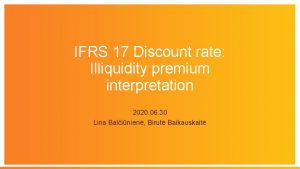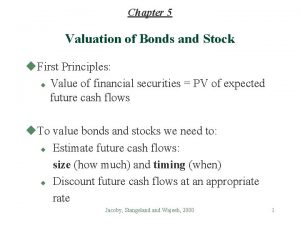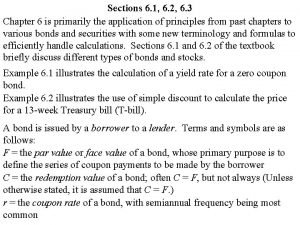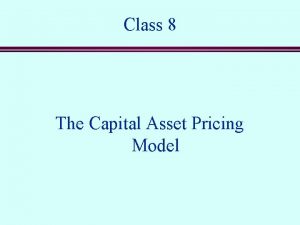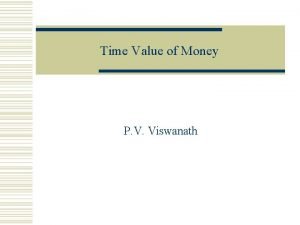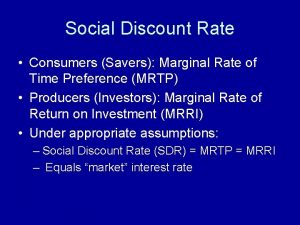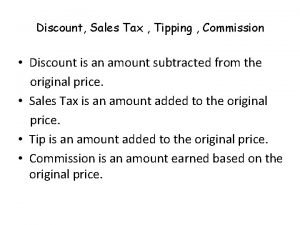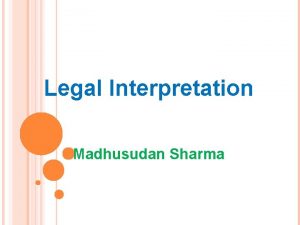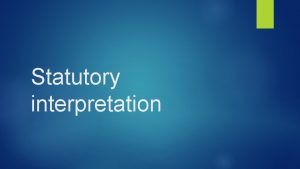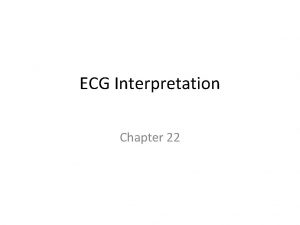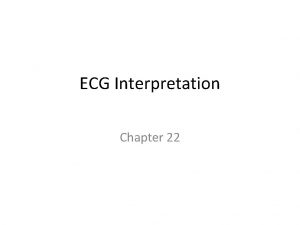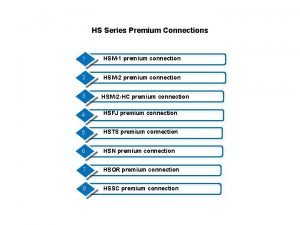IFRS 17 Discount rate Illiquidity premium interpretation 2020


![IFRS 17 requirements related to liquidity 36 [. . ] The discount rates applied IFRS 17 requirements related to liquidity 36 [. . ] The discount rates applied](https://slidetodoc.com/presentation_image/52015fb5be656379294519159d5a0b7e/image-3.jpg)
















- Slides: 19

IFRS 17 Discount rate: Illiquidity premium interpretation 2020. 06. 30 Lina Balčiūnienė, Birutė Baikauskaitė © Swedbank

Agenda · IFRS 17 requirements related to liquidity · Liquidity premium on insurance liability side ○ Definition ○ Bucketing · Liquidity premium on asset side ○ Definition ○ Deriving a market price for illiquidity from suitable market instruments to get 100% illiquidity premium · Criteria for having illiquidity premium to be added on top of risk-free rate · Alternative view · Examples: Liquidity premium for different products © Swedbank
![IFRS 17 requirements related to liquidity 36 The discount rates applied IFRS 17 requirements related to liquidity 36 [. . ] The discount rates applied](https://slidetodoc.com/presentation_image/52015fb5be656379294519159d5a0b7e/image-3.jpg)
IFRS 17 requirements related to liquidity 36 [. . ] The discount rates applied to the estimates of the future cash flows described in paragraph 33 shall: (a) reflect the time value of money, the characteristics of the cash flows and the liquidity characteristics of the insurance contracts; (b) be consistent with observable current market prices (if any) for financial instruments with cash flows whose characteristics are consistent with those of the insurance contracts, in terms of, for example, timing, currency and liquidity; and (c) exclude the effect of factors that influence such observable market prices but do not affect the future cash flows of the insurance contracts. B 79. [. . ] That adjustment shall reflect the difference between the liquidity characteristics of the group of insurance contracts and the liquidity characteristics of the assets used to determine the yield curve. Yield curves reflect assets traded in active markets that the holder can typically sell readily at any time without incurring significant costs. In contrast, under some insurance contracts the entity cannot be forced to make payments earlier than the occurrence of insured events, or dates specified in the contracts. © Swedbank 3

Liquidity premium on insurance liability side © Swedbank

Liquidity premium on insurance liability side (1) Unpredictability of cashflows that matters (less predictable – liquid, more predictable – illiquid) Definition CEIOPS Task Force Report on the Liquidity Premium, 2010: the illiquidity of an insurance liability measures thus the extent up to which its cash flows are predictable, i. e. are certain in amount and in timing. © Swedbank CRO forum, 2011: The extent to which the liquidity premium can be captured depends crucially on the predictability of the liability cashflow timing. Specifically, to the extent that funds can be claimed unexpectedly early, for example due to unexpected lapses, early withdrawals, increases in portfolio mortality or morbidity rates etc. then the liquidity premium cannot be reliably earned. Deloitte, 2018: a highly liquid insurance contract is characterized by the high unpredictability of its cash flows and the existence of a surrender value at any time without any redemption or tax penalty. Examples: unexpected lapses, early withdrawals, increases in portfolio mortality or morbidity rates, surrender value at any time without any redemption or tax penalty Link to assets side: in case cashflows are less predictable the liquidity premium cannot be reliably earned 5

Liquidity premium on insurance liability side (2) Definition IAA/AAI IAN 100: The article about U. S, 2012: In assigning life insurer reserves to liquidity buckets, we consider whether a product can be cashed in, the cost of doing so from the policyholder’s perspective, and the likelihood that the need to satisfy surrenders would lead to unexpected cash outflows from the insurer. © Swedbank EIOPA’s report, 2019: Insurance liabilities are considered illiquid over a given period when they allow the insurer to hold assets for this period with a very low risk of forced selling. This property depends on the timing and the predictability of the liability cash flows that in turn are influenced by product features such as surrender options. liquidity characteristics of insurance contracts be viewed from the perspective of the features embedded within the contract. [. . ] the liquidity of a liability is a function of the basic contract provisions, and especially any options that might exist for the policyholder that would impact the uncertainty regarding the amount and timing of payments. Unpredictability of cashflows that matters (less predictable – liquid, more predictable – illiquid) Perspective : Interlinked! Policyholder’s: if product can be cashed in, the cost of doing so from the policyholder’s perspective Insurer’s: the likelihood that the need to satisfy surrenders would lead to unexpected cash outflows Link to assets side: Liability is illiquid if allows the insurer to hold assets for this period with a very low risk of forced selling 6

Liquidity premium on insurance liability side (3) Bucketing: Highly liquid insurance contracts – a low (or even no) illiquidity premium; Very illiquid insurance contracts – a higher illiquidity premium (IAN 100) 100% Portfolio level liquidity premium (derived from yield curve of assets) ~90% E. g. Immediate annuities; liabilities with no redemption rights ~50% E. g. profit participation business; liabilities with redemption rights but also penalties 0% © Swedbank e. g. protection business, little impediment to surrender How many buckets needed? Can be only 0% and 100% (CEIOPS Task Force Report) 7

Liquidity premium on assets side © Swedbank

Liquidity premium on asset side (1) Definition CEIOPS Task Force Report: It is common practise to cover illiquid insurance liabilities with highly predictable cash flows with similarly potentially illiquid assets with corresponding maturities. The introduction of a liquidity premium in the valuation of insurance liabilities aims at eliminating this valuation mismatch and avoiding the situation that such investments no longer become an option for companies with a detrimental impact on both consumers and financial markets © Swedbank The article about US, 2012: For insurers, liquidity risk is most likely to occur when they have to pay customers an unexpectedly large amount. To do so, an insurer might have to liquidate assets. If assets are illiquid, this can involve selling at a loss (a so-called fire sale). Protection for insurers: EIOPA’s report, 2019: Undertakings would be able to match such stable and predictable cash flows with illiquid assets that may earn an illiquidity premium because it is relatively more difficult to sell these assets applying IP would give smaller liabilities and somewhat compensate assets drop without forcing company to sell assets with materialising loss Which assets to look at? Theoretical target portfolio with perfect match? Real assets? Both? 9

Liquidity premium on asset side (2) Definition Amundi research paper, 2018: Amundi The liquidity of of an an asset under Basel Committee (2013) can be be related to to its The fundamental and market characteristics as as follows: fundamental Fundamental characteristics: Fundamental low risk, ease and certainty of of valuation (high degree of of agreement on on low valuation is is likely with standardization, homogeneity, and simplicity of of valuation products), low correlation with risky assets, and listing on on aa developed and products), recognized exchange. recognized Examples of assets that might have illiquidity premium: hedge funds, venture capital, private equity, real estate, corporate debt, structured finance, direct lending, the purchase of portfolios and orphaned assets Market-related characteristics: active, sizeable market (low bid-ask spreads, Market-related high trading volumes, large and diverse number of of [committed] market high participants), low volatility (of price and volume during stressed periods), and participants), might to to quality (assets typically sought in in times of of systemic crisis). might There are three major sources of of illiquidity: There Transaction costs: Usually they affect more short-term investments than long Transaction -term investments and have greater influence on on trading frequency. -term Market organization: The structure of of markets (trading exchange, peer to to Market peer, etc) is is one fundamental element of of liquidity. peer, Diversity in in valuations: Difference in in opinions about the real/fair value of of an an Diversity asset. © Swedbank 10

Deriving a market price for illiquidity from suitable market instruments to get 100% illiquidity premium Several alternatives: 1. Mathematical derivation (includes using sophisticated structural models) 2. Apply or use the method of SII VA and MA © Swedbank 11

Deriving Illiquidity Premium from scratch Mix of top-down and bottom-up approaches: Top-down is used to estimate curve adjusted by expected loss (EL) and credit risk premium (CRP) using corporate bonds as starting reference portfolio. Then illiquidity premium (IP) is defined as difference between this curve (i. e. w/o EL and CRP) and government risk free curve, i. e. from top-down it is moved to bottom-up. Depending on specifics of liabilities (how liquid they are) IP should be scaled and added back on risk free curve (bottom-up). Top-down [B 83] In adjusting the yield curve <…> such adjustments include: <. . . > (b) excluding market risk premiums for credit risk, which are relevant only to the assets included in the reference portfolio. Bottom-up Expected credit losses Yield curve based on reference / actual portfolio Example of external services available in market: Credit risk premium for unexpecte d losses Structural models of the bond issuer (based on firm balance sheet and option-pricing techniques) can be used to estimate Expected credit loss. Such loss is derived by combining real-world (RW) probability of default with loss given default (LGD). Those can be measured using sophisticated models that produces procyclical estimates. Mismatch adjustment Illiquidity premium IFRS 17 discount curve © Swedbank Risk free curve Total credit adjustment (TAC, i. e. expected, i. e. EL + unexpected, i. e. CRP) starts from measuring Credit risk premium driven by expected assets return which can be estimated using weighted average cost of capital (WACC) approach. WACC is defined at portfolio level (to avoid difficulties in estimating individual issuer equity risk premium). Individual credit risk premium is calculated using market implied risk premium of issuer and scaled (using beta). Sophisticated models 12

Using existing measures / information to estimate IP SII measures Matching adjustment MA • • • MA = spread (on portfolio of matching assets) – fundamental spread (covering credit risk premium) Discount rate = RFR + MA EIOPA publishes fundamental spreads (and also PD, Co. D used to calculate those) For corporates: FS = max(PD+Co. D, 35%·LTAS) For governments: 30% LTAS for exposures to Member States’ central governments and central banks, 35% for non Member. Volatility adjustment VA VA = 65% of risk corrected spread (spread from which credit risk part is deducted) • Spread S before risk correction is weighted average of positive parts of government and corporate spreads. • Risk correction RC (expected credit loss, unexpected credit risk, any other risk) is weighted average of positive parts of risk corrections of government and corporate spreads. RC by meaning/nature is similar to FS (used for MA). • VA = 0. 65 (S-RC) Simple solution © Swedbank 13

Criteria for having illiquidity premium to be added on top of risk-free rate © Swedbank

Criteria for having illiquidity premium to be added on top of risk-free rate We consider the illiquidity premium to be added on top of the risk-free rate if and only if both below criteria are fulfilled: Considering value on exit and applicable surrender/partial Liability side: surrender penalty; option for partial withdrawal; guarantees The cash-flows of the corresponding insurance product are highly predictable in respect of amount and in timing; for example, possibility of unexpected lapses, early withdrawals, increases in portfolio mortality or morbidity rates etc is low. Asset side: The insurance company holds (or would have intention to hold) assets long-term and earns the liquidity premium on the asset side if the corresponding liability portfolio is illiquid. © Swedbank provided (maturity only or on early surrender as well); Purpose of product (e. g. savings for pension); Local taxation rules (taxes applied on early surrender) 1. Is the company able to match the stable and predictable cash flows with illiquid assets that may earn an illiquidity premium? 2. Assets covering liabilities are not invested into units of funds and the result of investment is directly affecting result of the company? 3. The need to satisfy e. g. surrenders of liability portfolio would lead to unexpected cash outflows from the insurance company? 15

Alternative view © Swedbank

Alternative view • Insurance contracts cannot be easily sold without incurring a cost. This should be reflected in the discount rate as a liquidity premium. – Such view refers to selling insurance contracts to other insurance provider. We think that using such perspective would mean that all insurance contracts have 100% illiquidity premium because there is no market where insurance contracts are traded between insurance providers. From whom this premium in this would be earned? Could it be interpreted that we earn it from client as margin in our pricing? • There is no direct correlation between illiquidity premium and liquidity risk. – There could be different angles to look to this, but we see those related: if company invests to illiquid assets and gets illiquidity premium for that, the company is facing liquidity risk if there is uncertainty in insurance liability cashflows. © Swedbank 17

Examples: Liquidity premium for different products © Swedbank

Examples: liquidity premium for different products Liabilities side Product Term Life Unit-link Traditional / with profits / endowment Annuities © Swedbank Partial Saving Surrender Guarantee withdrawal component rates on return option No Yes High or medium Medium - Yes / No Surrender penalty - - Yes Typically applied (stated in pricelist). Yes Low Yes No Typically applied (not stated explicitly) Yes Surrender not possible Yes / No - - Conclusion on liquidity of Taxation penalty liability - Preliminary conclusion Mostly liquid Depending on product (could be close to 0/negative if charged premium varies with risk) Medium liquid Assets matched perfectly with liabilities. Invested to funds. Market values of No IP funds are typically available on daily basis. Applicable (depends on local taxation rules) Mostly illiquid - Asset side Very illiquid Assets portfolio is constructed from financial instruments with different illiquidity characteristics. No IP IP applied but it’s a question of its size Full IP applied 19
 Ifrs discount rate
Ifrs discount rate Discount and premium
Discount and premium Premium discount formula
Premium discount formula Discount allowed
Discount allowed Trade discount vs sales discount
Trade discount vs sales discount Cash discount business math
Cash discount business math Single trade discount rate
Single trade discount rate How does interpretation b differ from interpretation a
How does interpretation b differ from interpretation a Portfolio diversification eliminates:
Portfolio diversification eliminates: Discount rate capm
Discount rate capm Discount rate capm
Discount rate capm Damodaran discount rates
Damodaran discount rates Discount rate capm
Discount rate capm Simple discount rate formula
Simple discount rate formula Risk and uncertainty in managerial economics
Risk and uncertainty in managerial economics Simple interest and discount
Simple interest and discount Decision tree analysis in capital budgeting
Decision tree analysis in capital budgeting Damodaran discount rate
Damodaran discount rate Damodaran discount rates
Damodaran discount rates Discount rate
Discount rate
